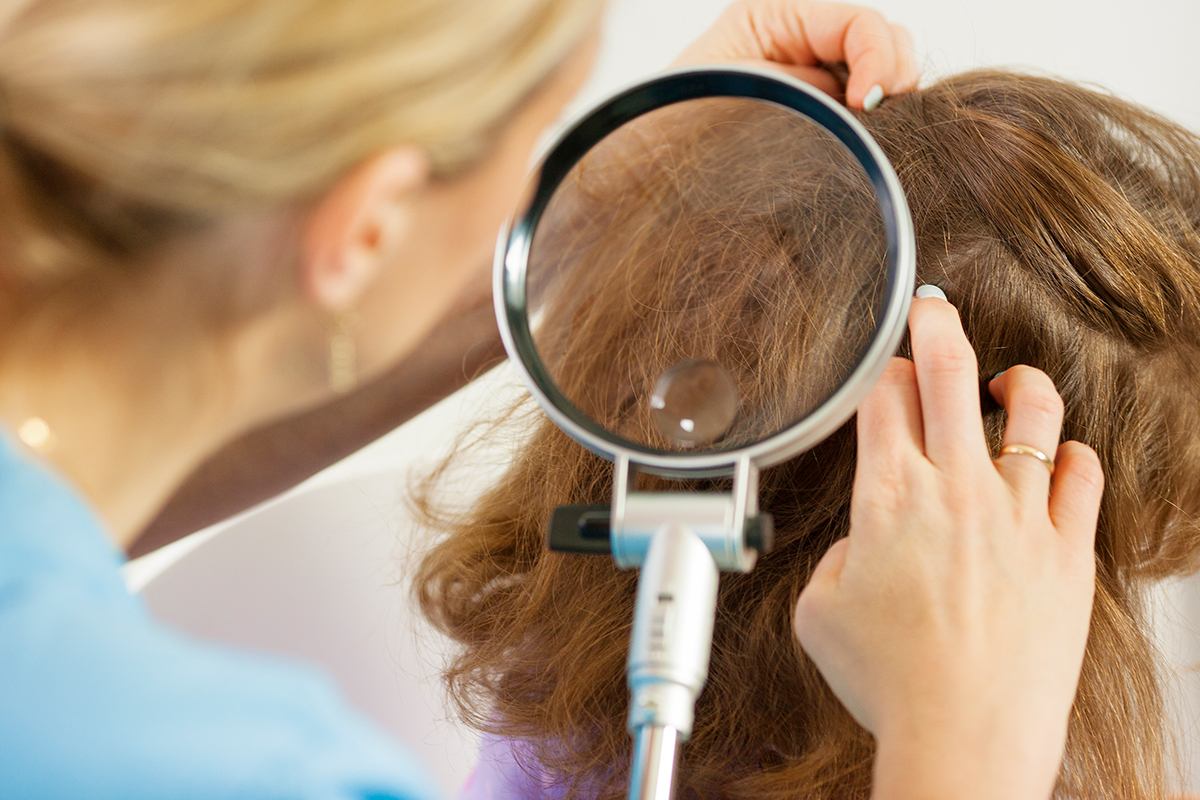How to avoid and treat lice
-
How do you prevent head lice?
Head lice are spread most commonly by direct head-to-head (hair-to-hair) contact. However, much less frequently they are spread by sharing clothing or belongings onto which lice have crawled. The risk of getting infested by a louse that has fallen onto a carpet or furniture is very small. Head lice survive less than 1–2 days if they fall off a person and cannot feed; nits cannot hatch and usually die within a week if they are not kept at the same temperature as that found close to the scalp.
The following are steps that can be taken to help prevent and control the spread of head lice:
- Avoid head-to-head (hair-to-hair) contact during play and other activities at home, school, and elsewhere (sports activities, playground, slumber parties, camp).
- Do not share clothing such as hats, scarves, coats, sports uniforms, hair ribbons, or barrettes.
- Do not share combs, brushes, or towels. Disinfest combs and brushes used by an infested person by soaking them in hot water (at least 130°F) for 5–10 minutes.
- Do not lie on beds, couches, pillows, carpets, or stuffed animals that have recently been in contact with an infested person.
- Machine wash and dry clothing, bed linens, and other items that an infested person wore or used during the 2 days before treatment using the hot water (130°F) laundry cycle and the high heat drying cycle. Clothing and items that are not washable can be dry-cleaned OR sealed in a plastic bag and stored for 2 weeks.
- Vacuum the floor and furniture, particularly where the infested person sat or lay. However, spending much time and money on housecleaning activities is not necessary to avoid reinfestation by lice or nits that may have fallen off the head or crawled onto furniture or clothing.
To help control a head lice outbreak in a community, school, or camp, children can be taught to avoid activities that may spread head lice.
-
How to get rid of head lice
-
How do you get pubic lice?
Pubic lice or genital lice (also known as "crab lice") most commonly are spread directly from person to person by sexual contact. Pubic lice very rarely may be spread by clothing, bedding, or a toilet seat.
The following are steps that can be taken to help prevent and control the spread of pubic lice:
- All sexual contacts of the infested person should be examined. All those who are infested should be treated.
- Sexual contact between the infested person(s)s and their sexual partner(s) should be avoided until all have been examined, treated as necessary, and reevaluated to rule out persistent infestation.
- Machine wash and dry clothing worn and bedding used by the infested person in the hot water (at least 130°F) laundry cycle and the high heat drying cycle. Clothing and items that are not washable can be dry-cleaned OR sealed in a plastic bag and stored for 2 weeks.
- Do not share clothing, bedding, and towels used by an infested person.
-
How to get rid of pubic lice
-
How do you get scabies?
When a person is infested with scabies mites the first time, symptoms may not appear for up to two months after being infested. However, an infested person can transmit scabies, even if they do not have symptoms. Scabies usually is passed by direct, prolonged skin-to-skin contact with an infested person. However, a person with crusted (Norwegian) scabies can spread the infestation by brief skin-to-skin contact or by exposure to bedding, clothing, or even furniture that he/she has used.
Scabies is prevented by avoiding direct skin-to-skin contact with an infested person or with items such as clothing or bedding used by an infested person. Scabies treatment usually is recommended for members of the same household, particularly for those who have had prolonged skin-to-skin contact. All household members and other potentially exposed persons should be treated at the same time as the infested person to prevent possible reexposure and reinfestation. Bedding and clothing worn or used next to the skin anytime during the 3 days before treatment should be machine washed and dried using the hot water and hot dryer cycles or be dry-cleaned. Items that cannot be dry-cleaned or laundered can be disinfested by storing in a closed plastic bag for several days to a week. Scabies mites generally do not survive more than 2 to 3 days away from human skin. Children and adults usually can return to child care, school, or work the day after treatment.
Persons with crusted scabies and their close contacts, including household members, should be treated rapidly and aggressively to avoid outbreaks. Institutional outbreaks can be difficult to control and require a rapid, aggressive, and sustained response.
Rooms used by a patient with crusted scabies should be thoroughly cleaned and vacuumed after use. Environmental disinfestation using pesticide sprays or fogs generally is unnecessary and is discouraged.
-
How to treat scabies
Simple Tips for Prevention
- Teach Good Habits. Personal belongings such as brushes, hats, and towels can pass lice. So don't share.
- Be Aware of Shared Spaces. Keep personal items (hats, coats, etc) out of common areas.
- Avoid Outbreaks. If you know of an outbreak, avoid locations where head-to-head contact would occur like sporting activities.
Where to Buy
Click to see which stores carry our lice treatment products.

Lice Can’t Jump: 10 Myths about Head Lice Debunked
Pets transmit lice. False!

